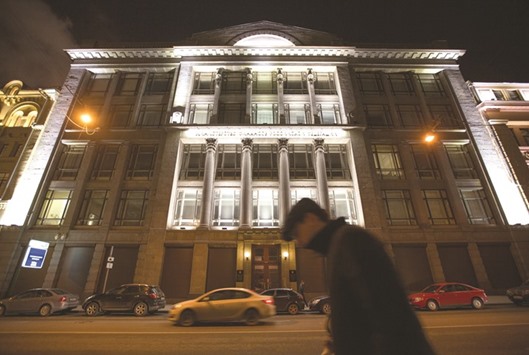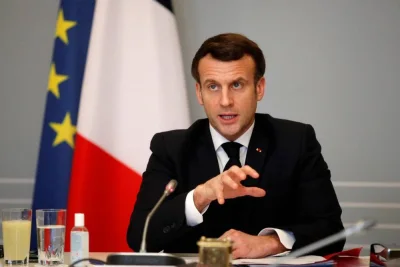Investors starved of Russian debt would snap up a new issue faster than they embraced Argentina’s landmark bond sale last month, according to Deputy Finance Minister Maxim Oreshkin.
Banks that jumped at the opportunity to organise Russia’s first offering of international debt since 2013 have cooled to the idea after pushback from authorities in the US and Europe, he said in a Bloomberg Television interview.
Now that lenders “aren’t in a rush to do a deal,” Russia is reconsidering its plans, according to Oreshkin, who spoke from the Milken Institute Global Conference in Beverly Hills, California.
Initially banks “were willing to participate in the deal because they see really huge demand,” Oreshkin said. “It would be an easier deal for them to place the Russian Eurobond on the market, even easier than to place the Argentinian Eurobond.”
While Russia is smarting from a second year of sanctions over the conflict in Ukraine, Argentina had to contend with fallout from its 2001 default and a decade-long dispute with creditors.
It drummed up almost $70bn of bids and could have doubled the size of its first debt offering in 15 years, which raised $16.5bn.
Argentina’s finances are no match even for a Russia crippled by the collapse in oil prices. While cut to junk by S&P Global Ratings and Moody’s Investors Service, Russia has retained an investment-grade score from Fitch Ratings. Argentina has never had an investment grade, according to data compiled by Bloomberg. It has a default rating at S&P and Fitch and is rated six levels below investment grade by Moody’s.
The spread between Russia’s September 2043 Eurobond and similar-maturity US Treasuries was 329 basis points on Wednesday.
That compares with the 585 basis-point premium investors demand to hold Argentinian debt due April 2046 rather than equivalent US debt.
“The story here is that it’s actually investors asking us to do an an issue because Russia wasn’t issuing for several years,” Oreshkin said. “Russian risk is doing really well in the past years and those funds on the sidelines are underperforming the benchmarks.
They were coming and asking us to issue a new debt to do a new supply on the market.”
That view runs counter to concerns raised by Eurobond investors in March. Europe’s biggest bondholders were being told by internal risk managers to avoid a new debt issue after regulators in the US and European Union warned foreign banks off helping Russia sell debt abroad.
While Russia itself wasn’t subject to the sanctions imposed on some of its biggest companies in response to President Vladimir Putin’s role in the Ukraine crisis, foreign governments are concerned the funds will be used to support sanctioned companies.
The US warned banks that participating in Russia’s Eurobond sale would run counter to its foreign policy and the EU told lenders to be “mindful” of the indirect risks of violating the bloc’s economic sanctions.
Russia won’t return to global bond markets under sanctions this year, according to 23 of 30 analysts polled by Bloomberg.
The Finance Ministry set a cap of $3bn on its possible borrowing abroad in 2016 after selling $7bn in Eurobonds each year in 2012 and 2013.
That would have covered about a tenth of the deficit this year, with the rest financed by domestic borrowing, tapping its rainy-day Reserve Fund and selling stakes in state-controlled companies.
The government ran a deficit of 2.4% of gross domestic product last year and wants to keep the shortfall to 3% in 2016 at an average oil price of $40 a barrel.
The nation’s main export blend Urals averaged $33.93 in the first four months of the year, according to the Finance Ministry. Russia is planning to shelve the plan for this year, two senior officials said last month.
Since sanctions were imposed in 2014, a sale would have had more symbolic significance than fiscal benefit by showing the government could access markets despite the western limits, according to the officials.
“It’s not a problem for us.” Oreshkin said. “It’s more a problem for hedge funds and funds, real money accounts in the US, for example, which can’t invest in the risk which is performing quite well.”

A pedestrian passes the headquarters of Russia’s ministry of finance in Moscow. The ministry set a cap of $3bn on its possible borrowing abroad in 2016 after selling $7bn in Eurobonds each year in 2012 and 2013.


